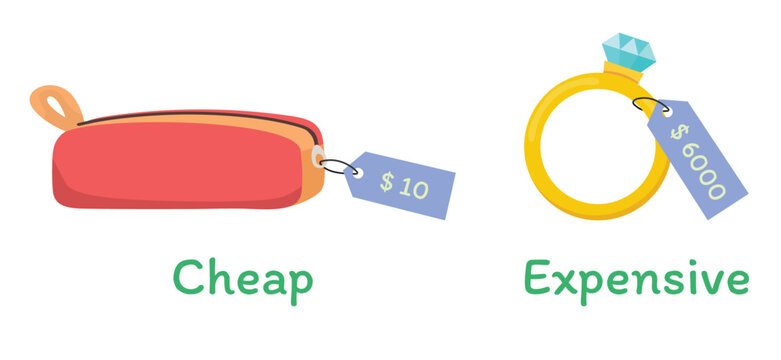A logo is an extra visual symbol. It’s the face of your brand. Some logos may look quite simple, but they create notions of prestige, excellence, and sophistication. That’s what makes them “expensive” looking. But what specifically makes a logo feel that high-end, premium touch?
Whether you’re a business owner in need of a logo or a brand already in existence trying to take your brand’s visual appearance to the next level, the components that make a logo look expensive can set you apart in a crowded market. That’s where this blog comes in – we’re going to look at what makes a logo look lucrative and lavish without it being necessarily expensive.
1. Simplicity with Purpose
Luxury logos often embrace minimalism. A fancy-looking logo should be free from visual clutter, extraneous graphics, and excessive colours. It is based on clean lines, meaningful shapes, and a well-proportioned design. The simplicity of design implies confidence, saying to the viewer, “This brand does not need gimmicks to turn heads.”
Think logos like Chanel, Rolex, or Apple. They are so simple yet so synonymous with music.
2. Timeless Typography
Fonts are another element you should consider when thinking about perception. An expensive-looking logo has a nice, high-quality, or custom serif font. Serif letters have a classic look, with small lines attached to the end of a stroke in a letter. This says trust, professionalism, and history.
Then again, a sleek sans serif can also appear expensive-looking if it is sufficiently open and well complemented by graphic elements. And for the love of Helvetica, steer clear of clichéd or generic fonts; nothing will devalue your logo faster than a poor font choice.
For such a well-crafted refinement, businesses prefer to invest in professionals like a logo designer in Pakistan who knows how to combine creativity with precision to make your brand stand apart in today’s market.
3. Balanced Spacing and Proportions
White space is a designer’s best friend. A luxury logo is intelligent in its use of space, allowing elements to breathe. That gives it a very settled look. Bad spacing, overly aligned, or cramped letters can quickly give a logo an unprofessional appearance.
Expensive logos feel balanced. Each line, curve, and symbol is placed intentionally, indicating that care and thought went into every inch of the font.
4. Meaningful Design Elements
Logo designs that appear expensive often contain layers of hidden symbolism. A good logo typically features imagery that tells a story or alludes to the brand’s values, history, or industry sector.
For instance, the arrow from the FedEx logo is an emblem of speed and accuracy, as well as the Mercedes-Benz three-pointed star that evokes domination over land, sea, and air. Some symbols suggest history, symbolism of power, or exclusivity, and it’s not necessarily in your face.
5. Premium Colors are employed
Color has a significant impact on the perception of a logo, though. Gold, black, deep navy, jewel green, and maroon are some of the most used high-end brand colors. These colors convey emotional information black for elegance, gold for richness, and green for growth and class.
However, simply applying a “rich” color to a logo does not, by itself, make it look expensive. It is extremely challenging to find luxury logos that incorporate neon or extremely bright colors. They lean instead towards muted tones that speak of confidence and exclusivity.
6. Unique Symbol or Icon
A high-end logo typically features a distinctive symbol that becomes iconic in its own right. Consider the outsized crocodile of Lacoste or the Nike swoosh. These are instantly identifiable marks; it’s the personality of the brand in one specific shot.”
To accomplish this, the icon should be distinctive and memorable whilst also scaling down well. Avoid generic clipart or templates. A strong logo will be visually effective on everything from a business card to a billboard, and it should be equally effective in both black and white and color.
7. Attention to Detail
Most often, the difference between a cheap-looking logo and an expensive one is in the amount of detail.
Are the lines sharp? Is the alignment perfect? Are curves smooth and consistent? Designers spend hours crafting every single pixel.
TINY IMPERFECTIONS CAN SPOIL A LOGO’S ELEGANCE. That’s why the top-shelf logos typically result from many rounds of drafts and revisions. The final piece looks shiny and perfect.
8. Versatility and Adaptability
A costly logo looks good across every medium and scale. Emboss it on a leather item, engrave it on metal, print it on a website, stitch it onto some fabric it just looks good. Quality design is all about versatility.
Logo designers design logos in vector format so a client can enlarge it without losing quality. They also offer alternate versions (black, white, landscape, portrait) to maintain unity across platforms.
9. Confidence in Simplicity
Costly logos are not suitable for all people. And yet, they pack a punch with just a few key design choices. Frequently, brands that have enough confidence in themselves do not tend to tone down their logos they don’t need anything that significant, after all, nor do they want to detract attention from the quality of what they do and what they offer. This minimalist approach conveys to customers that the brand is well-established and trustworthy and doesn’t need to oversell or over explain its value.
Final Thoughts
A logo that looks expensive doesn’t necessarily need to be costly to produce. What make the difference is the thought, skill, and care that went into it. When done right, the logo is an asset that’s more valuable than gold because, in one glance, it can convey to someone what your brand is all about.


